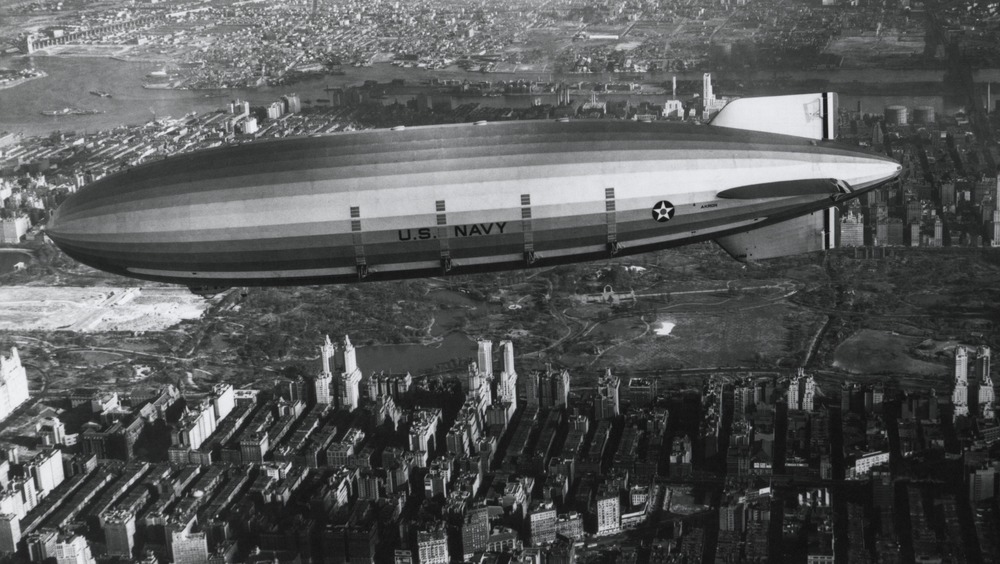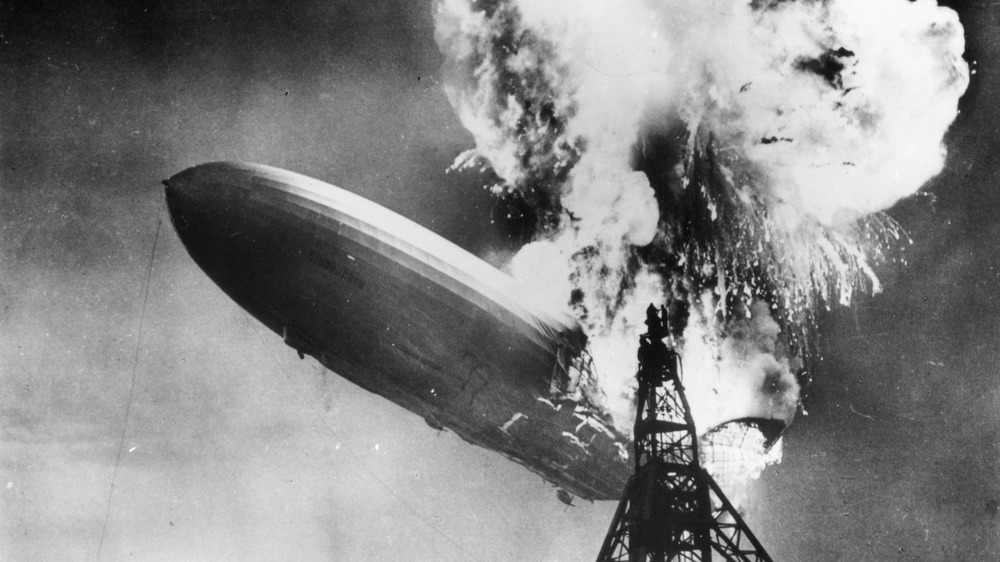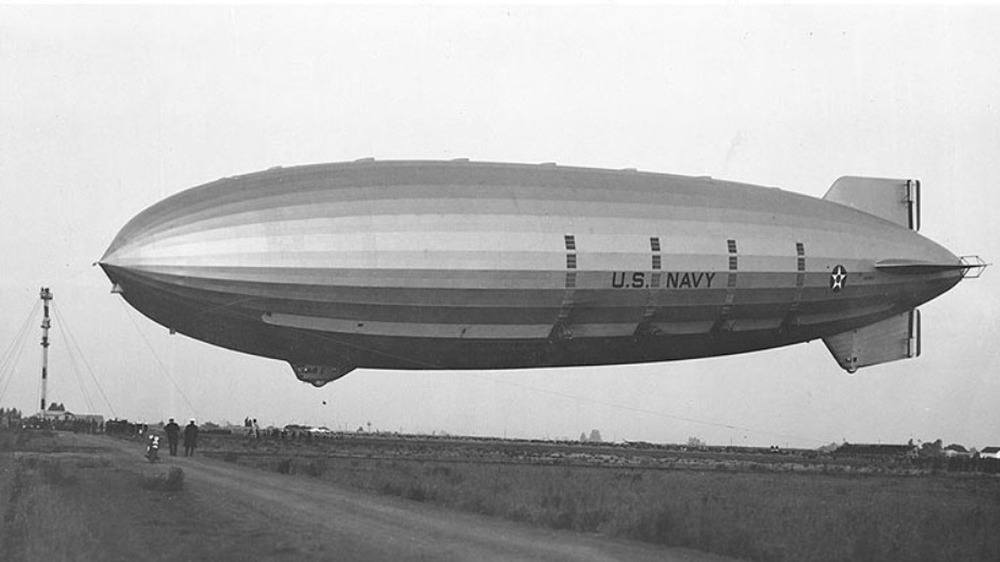The Truth About The Tragic USS Akron Crash
People rarely think about airships anymore. Sure, every once in a while you might be lucky to catch sight of the Goodyear Blimp flying over a major sporting event trying to sell you tires or a steampunk novel where characters travel by dirigible, but the golden age of airships is nearly a century in the past.
If prompted to name one of these "whales of the sky," we'd bet most people could only conjure one — the Hindenburg. The German airship was attempting to dock in New Jersey after a successful transatlantic crossing when it went down in 1937. The Hindenburg was carrying 36 passengers and 61 crew members who'd flown all the way from Frankfurt, Germany, when it's thought that a spark ignited its hydrogen reserves, causing the ship to burn and quickly crash, killing 35. But the disaster, immortalized by a stricken newsreel announcer exclaiming "Oh, the humanity!" was far from the deadliest airship accident. That claim is held by the seldom-mentioned USS Akron accident of 1933.
The golden age of the airship
To understand the significance of the Akron incident, it's helpful to understand why airships were such a cultural touchstone during their golden age, which ran from the turn of the century through the 1930s. To some, airships epitomized the bright optimism of the early 20th century, when it seemed like the future belonged to science and technology. It did in many ways, of course, but airships didn't pan out to be a part of that future.
What began so hopefully — even the top of the Empire State Building was intended to moor great airships, according to NorthJersey.com — ended when the Hindenburg went down in flames. With it, the hopes of many who aspired to the glamour and ease of transatlantic travel. The classic airships had meant travelers could easily travel from Europe to America at a time before that was even possible through commercial flights. It wasn't until 1939 that travelers could hunker down for a single airline flight across the ocean.
What happened to the USS Akron?
Before the Hindenburg, however, came the USS Akron disaster. Why does history remember the Hindenburg but seems to have forgotten the USS Akron? The likely answer lies in the power of media. The crash of the Hindenburg was not only captured on camera, but the footage was played in newsreels at theaters across the country. Meanwhile, the crash of the USS Akron, a Navy airship, was reported but failed to capture the nation's interest in the same way.
The Akron was on a mission the night of April 3, 1933, when it took off from its base in Lakehurst, New Jersey (later the site of the Hindenburg disaster). According to Airships.net, the Akron ran into trouble off the coast when strong updrafts and downdrafts buffeted the craft, causing its tail to hit the ocean below. Frank C. McCord, the ship's commander, was no longer able to control it, and the Akron crashed into the water. While pilot error is the generally accepted cause of the crash, we're still not sure exactly what led to such error, with speculation ranging from faulty altimeter readings to McCord accidentally piloting the plane's tail into the water while trying to escape the pull of a downdraft. Seventy-five people died that night — many of whom might have been spared had they not died overnight in the chilly water. So confident was the military in the safety of the great ship that it didn't come equipped with life jackets.


